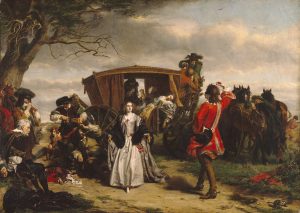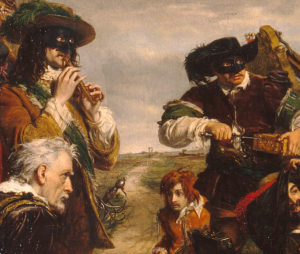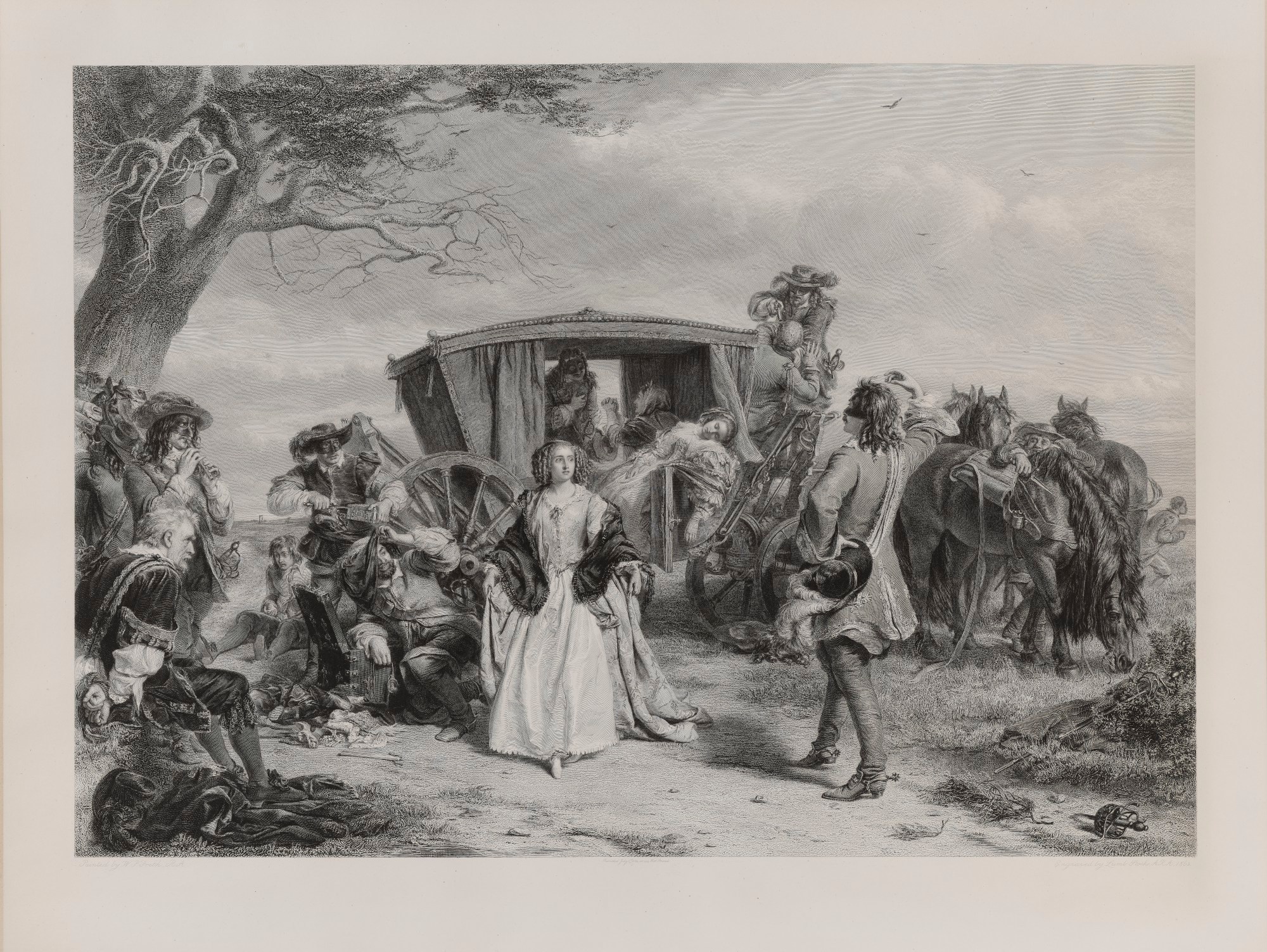A Highwayman Recorder Player
William Powell Frith was an English painter specialising in genre subjects, Shakespearian scenes and panoramic narrative works of life in the Victorian era. He was born in Alfield near Rippon (1819) and died in London (1909). Among Frith’s best-known works is a dramatic depiction of an incident in the life of the French-born highwayman Claude Duval (1643-1670). Duval came from a family of decayed nobility and worked in the service of exiled royalists who returned to England under King Charles II. Little else is known of his history. According to popular legend, he abhorred violence, showing courtesy to his victims and chivalry to their womenfolk, thus spawning the myth of the romantic highwayman, as taken up by many novelists and playwrights. A particularly famous tale of Duval’s daring do, placed in more than one location and later published by William Pope, claims that he took only a part of his potential loot from a gentleman when the man’s wife agreed to dance a courant with him by the wayside.
The scene depicts a group of highwaymen holding up the carriage of Lady Aurora Sydney carrying a young woman who has been made to dance with the captain of the band of men, Claude Duval, as part of her ransom. The event takes place on a bleak heathland road under a cloudy sky. In the centre of the composition are the dancing figures of captor and hostage: he stands masked, with his right arm raised, his left hand (holding a feathered cap) placed on his hip and his right foot pointed forward, facing away from the viewer; she stands forward-facing, holding her skirts out to the side, with her left foot pointed forward, an alarmed expression on her face. Behind them is the carriage containing the slumped figure of a young woman who has fainted and that of an old woman pleading with a highwayman; the driver of the coach has a pistol pointed at his head as one of the men cuts the harnesses of the coach-horses, to the right. Crouching near to the rear wheel of the coach, a highwayman pauses from emptying the travellers’ possessions from a chest to take a bemused look at the dancers; another stands behind him prising open a small case with a knife. To the left of the composition, beneath a tree, is the standing figure of a highwayman playing a pipe or whistle to provide music for the dancers, with the elderly figure of a male hostage seated on a rock beside him, his hands tied behind his back as he watches the scene.
On closer inspection (see detail above), the ‘pipe or whistle’ is soprano-sized, the window/labium is clearly depicted, and the player’s hands and fingers are deployed perfectly for recorder-playing with the hole for the smallest finger of the lowermost (left) hand clearly visible, so this is a recorder rather than a flageolet or other duct flute.
The gallery’s display label reads: “Claude Duval was a famous highwayman during the reign of Charles II. Frith paints one of Duval’s mocking acts of chivalry. Holding up a coach, he offered to forfeit the loot if the beautiful female passenger would dance with him. The gallows in the distance foretell his death. Frith went to great pains to achieve historic accuracy, consulting experts on costume and dance. Ultimately though, the drama was most important. He wrote: ‘I thought if I could succeed in retaining the beauty of the lady combined with the terror she would feel, I should perform a feat well worthy of achievement'”.
Frith’s paintings were immensely successful with the British public of his day, especially in the form of prints by the engraver Lumb Stocks (1812–1892) whose reproduction of this very work was submitted to the Royal Academy as Stocks’ diploma requirements. Colour versions of it are sometimes found on jigsaw puzzles, chocolate boxes, and biscuit-tin lids.
References
- Lander, Nicholas S. 1996-2024. Recorder Home Page: Iconography.
- Website 2017. Look at Paintings. Claude Duval.
- Sugden, John & Philip 2015. The Thief of Hearts. Claude Duval and the Gentleman Highwayman in Fact and Fiction. Forty Steps. Dust jacket.
- Website 2022. PicClic: Vintage W & R Jacob and Company Biscuit Tin Claude Duval Stagecoach Scene.
Cite this article as: Nicholas S. Lander. 1996–2024. Recorder Home Page: Stand and Deliver!. Last accessed 25 April 2024. https://www.recorderhomepage.net/stand-and-deliver/



